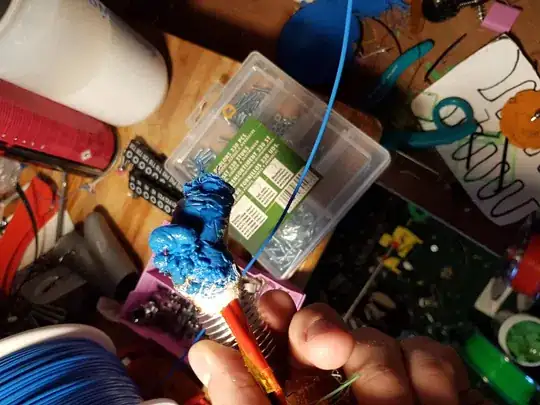My print popped out from the bed and glued to the nozzle. As the printer was printing next hour or so, a lot of pla was extruded and formed on the nozzle.
I'm wondering what will be the best way to remove pla from the nozzle without overheating wires?
a remark: was trying to heat the nozzle over 180, but I am getting a thermal runout. The pla is hard, I don't want to broke the throat.
